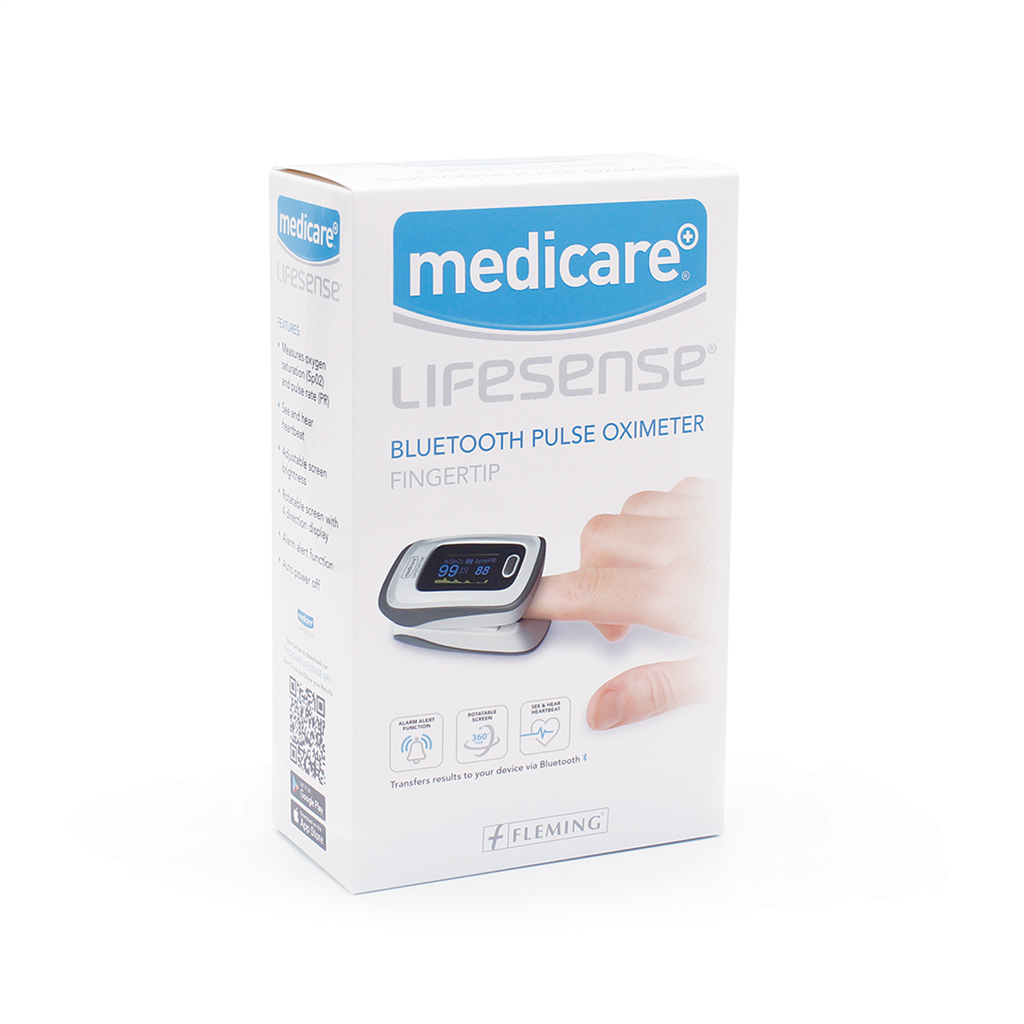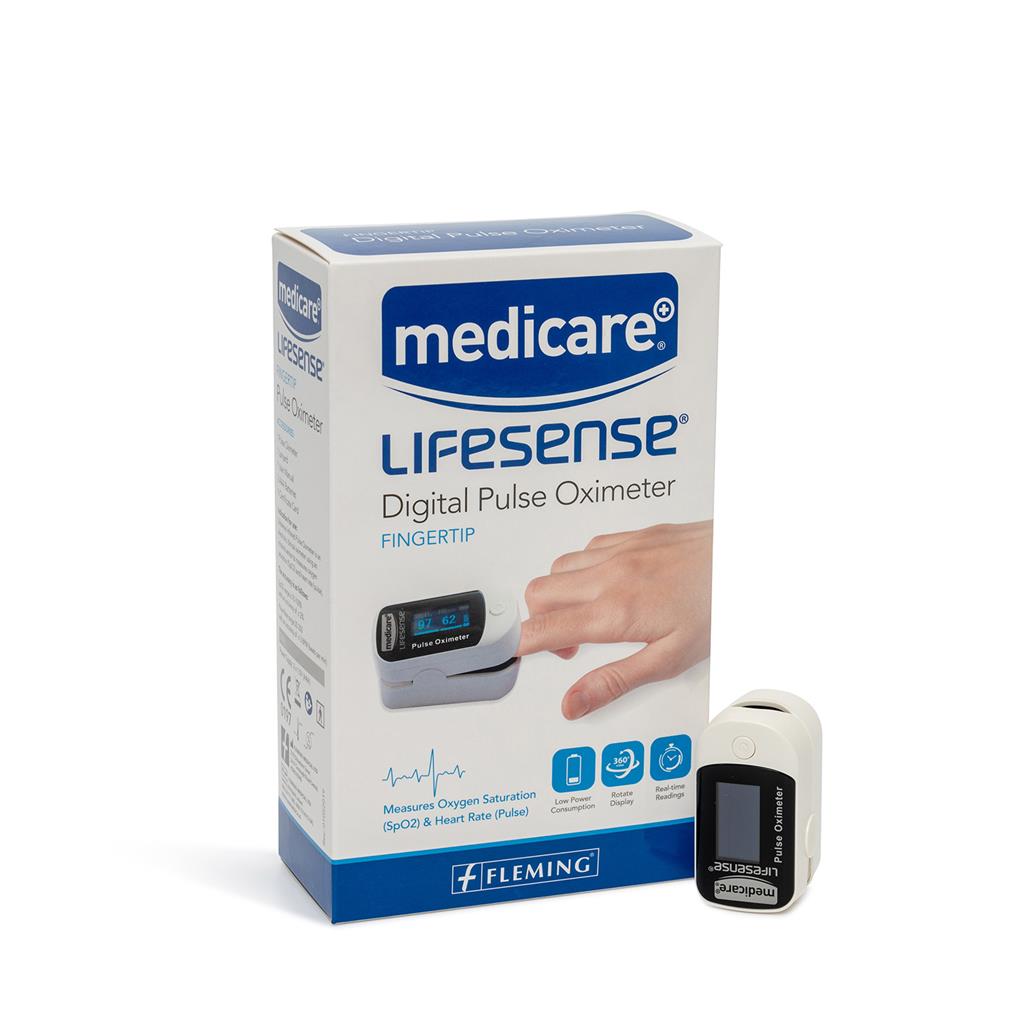Headlines
Pulse Oximeters & Fitness Tracking Explained
11 August 2022

More recently, pulse oximeters have become a popular tool to use to track and measure fitness. Let's look at some tips on how to get an accurate reading, when to use a pulse oximeter, and its benefits.
Pulse oximeters are non-invasive devices used to estimate the oxygen saturation of the blood (SpO2) and the pulse rate. In simple terms, a pulse oximeter measures how well oxygen is being transported to the parts of your body that are furthest away from your heart such as your legs and arms.
Pulse oximeters have risen in popularity in recent years. Before, pulse oximeters would have been viewed as a more clinical tool used by doctors and nurses to monitor health. Now, pulse oximeters are available to all so you can monitor your health from the comfort of your own home without paying for expensive medical equipment. During COVID-19, a form of oxygen deprivation called silent hypoxia was identified in patients suffering from the virus. This is where your blood oxygen levels (SpO2) declined (below 90%) slowly without you realising and can cause serious illness if left untreated. A pulse oximeter is the perfect tool to track your oxygen levels in order to stay in control of your own health. Other people who would need to use a pulse oximeter are those who suffer from any of the following.:
A healthy SpO2 (blood oxygen saturation level) is ideally between 95% and 100%. For most of the population, between 60 and 100 beats per minute is a healthy heart rate. This can alter depending on numerous factors such as exercise, stress levels, hormones, and medication. If you are worried about your heart rate or if you think you are suffering from hypoxia (a level of blood oxygen below 95%) it is advised to consult with your GP.
Knowing your numbers can be a great tool to use for athletes who want to track their recovery heart rate. It is also perfect for people returning to exercise after surgery to help monitor their oxygen levels and for athletes that engage in extreme exercise at high altitudes to track their oxygenation. The average person needs 550 litres of oxygen per day to function. The amount we require stays the same when we engage in light to moderate exercise. For more intense exercise, oxygen requirement can double or even triple the average amount needed.
When commencing exercise, it is normal for the body’s blood oxygen levels to drop slightly. As your body adapts to the various levels of oxygenation, and your breathing rate increases, the body’s blood oxygen levels increase back to a normal level. If your body is not getting enough oxygen, it can cause breathing to become more difficult indicating that your body may need a short break or to lower intensity.
Using a pulse oximeter can highlight when athletes need a recovery day. If you are an athlete who takes part in intense exercise, it is a good idea to monitor your blood oxygen levels. Levels below 95-100% are a good indication that your body needs a break. Over exercising can often do more harm than good, causing fatigue and affecting your overall performance. Knowing your numbers can be extremely useful and can help you to notice these dips in oxygen levels so you can give your body a proper chance to recover. If your levels are below 95% consistently, it is best to consult with your GP.
Hypoxemia can often be linked to heart issues or lung conditions such as asthma. Some medications and people who suffer from sleep apnea can also trigger hypoxemia and bronchitis. COVID-19 can also cause hypoxemia, so it is best to see a GP if you experience frequent symptoms when exercising or even at rest as it could be linked to another undiagnosed illness.
Resources:
https://www.masimopersonalhealth.com/blogs/media/monitortrackandmaximisetrainingandrecovery
Who needs to use a pulse oximeter?
Pulse oximeters have risen in popularity in recent years. Before, pulse oximeters would have been viewed as a more clinical tool used by doctors and nurses to monitor health. Now, pulse oximeters are available to all so you can monitor your health from the comfort of your own home without paying for expensive medical equipment. During COVID-19, a form of oxygen deprivation called silent hypoxia was identified in patients suffering from the virus. This is where your blood oxygen levels (SpO2) declined (below 90%) slowly without you realising and can cause serious illness if left untreated. A pulse oximeter is the perfect tool to track your oxygen levels in order to stay in control of your own health. Other people who would need to use a pulse oximeter are those who suffer from any of the following.:
- Chronic obstructive pulmonary disease (COPD)
- Asthma
- Pneumonia
- Lung cancer
- Anemia
- Heart Disease
Medicare LifeSense Bluetooth Pulse Oximeter:
The Medicare LifeSense Bluetooth Pulse Oximeter is an easy-to-use Bluetooth device that delivers quick and accurate results straight to your smartphone within 10 seconds. These results can then be shared from your smartphone directly to your GP, caregivers and loved ones. With adjustable screen brightness and a built-in alarm alert function, the LifeSense Bluetooth pulse oximeter is the perfect device to monitor your health from home.
Medicare Digital Fingertip Pulse Oximeter:
The Medicare Digital Fingertip Pulse Oximeter works in the exact same way. In order to track your results accurately, input them manually into the Medicare LifeSense App and share them directly with your medical professional.
What Is a Normal Reading?
A healthy SpO2 (blood oxygen saturation level) is ideally between 95% and 100%. For most of the population, between 60 and 100 beats per minute is a healthy heart rate. This can alter depending on numerous factors such as exercise, stress levels, hormones, and medication. If you are worried about your heart rate or if you think you are suffering from hypoxia (a level of blood oxygen below 95%) it is advised to consult with your GP.
Using A Pulse Oximeter to Track Your Fitness:
Knowing your numbers can be a great tool to use for athletes who want to track their recovery heart rate. It is also perfect for people returning to exercise after surgery to help monitor their oxygen levels and for athletes that engage in extreme exercise at high altitudes to track their oxygenation. The average person needs 550 litres of oxygen per day to function. The amount we require stays the same when we engage in light to moderate exercise. For more intense exercise, oxygen requirement can double or even triple the average amount needed.
When commencing exercise, it is normal for the body’s blood oxygen levels to drop slightly. As your body adapts to the various levels of oxygenation, and your breathing rate increases, the body’s blood oxygen levels increase back to a normal level. If your body is not getting enough oxygen, it can cause breathing to become more difficult indicating that your body may need a short break or to lower intensity.
Using a pulse oximeter can highlight when athletes need a recovery day. If you are an athlete who takes part in intense exercise, it is a good idea to monitor your blood oxygen levels. Levels below 95-100% are a good indication that your body needs a break. Over exercising can often do more harm than good, causing fatigue and affecting your overall performance. Knowing your numbers can be extremely useful and can help you to notice these dips in oxygen levels so you can give your body a proper chance to recover. If your levels are below 95% consistently, it is best to consult with your GP.
What Causes Hypoxemia?
Hypoxemia can often be linked to heart issues or lung conditions such as asthma. Some medications and people who suffer from sleep apnea can also trigger hypoxemia and bronchitis. COVID-19 can also cause hypoxemia, so it is best to see a GP if you experience frequent symptoms when exercising or even at rest as it could be linked to another undiagnosed illness.
Resources:
https://www.masimopersonalhealth.com/blogs/media/monitortrackandmaximisetrainingandrecovery


